For most companies, employee evaluations help align individual performance with the overall expectations of the company. These evaluations influence decisions regarding promotions, salary increments, and even layoffs. Conducting effective performance reviews has glaring immediate benefits. It
- enhances task efficiency
- clarifies expectations
- improves communication
- recognizes achievements.
The result is employees feeling more fulfiled and the organization positioned to succeed better.
Every employee wants to know if his efforts are recognized and how he can improve. Performance reviews provide this clarity and direction, setting him on a path of continuous growth and development. 85% of employees have indicated they will quit if the review process is "unfair".
You Need Performance Reviews. Here's Why:
Performance reviews, whether conducted annually, biannually, quarterly, or monthly, are formal assessments of an employee’s work habits, productivity, and overall impact on the team. These evaluations serve several critical purposes:
1. Setting Expectations

Reviews help clearly define what is expected from employees in terms of performance and behavior.
For example, in a tech company, expectations might include timely completion of software development projects and effective collaboration with the team. Without a timely review, the team might get too comfortable delivering late on deadlines.
2. Measuring Success
Reviews help you assess whether employees are meeting, exceeding, or falling short of expectations. It also helps employees access themselves based on pre-agreed metrics.
Using a sales team as an example, success might be measured by the number of new clients acquired or the revenue generated.
3. Guiding Decisions

Reviews help provide a basis for making informed decisions about pay raises, promotions, and other career advancements.
Imagine if Nkechi, a customer service representative, consistently receives high ratings from customers. If her performance review leads to a well-deserved promotion, it might inspire other customer service reps to emulate her good example.
4. Improving Productivity
Regular reviews help identify areas for improvement, thus enhancing overall productivity. If Chike, a marketing manager, struggles with campaign deadlines, his review can highlight this and offer solutions.
5. Providing Support
Good performance reviews offer employees the guidance and resources they need to succeed. For instance, if Ada, an IT specialist, needs further training on new software, the review can recommend appropriate courses.
6. Fostering Communication

A well-done review encourages open dialogue between employees and managers. Regular reviews can bridge communication gaps, ensuring everyone is on the same page.
7. Assessing Satisfaction and Engagement
With the right questions, reviews helps management teams understand how engaged and satisfied employees are with their roles. This insight helps in retaining top talent and maintaining a motivated workforce.
What do you evaluate during a performance review?
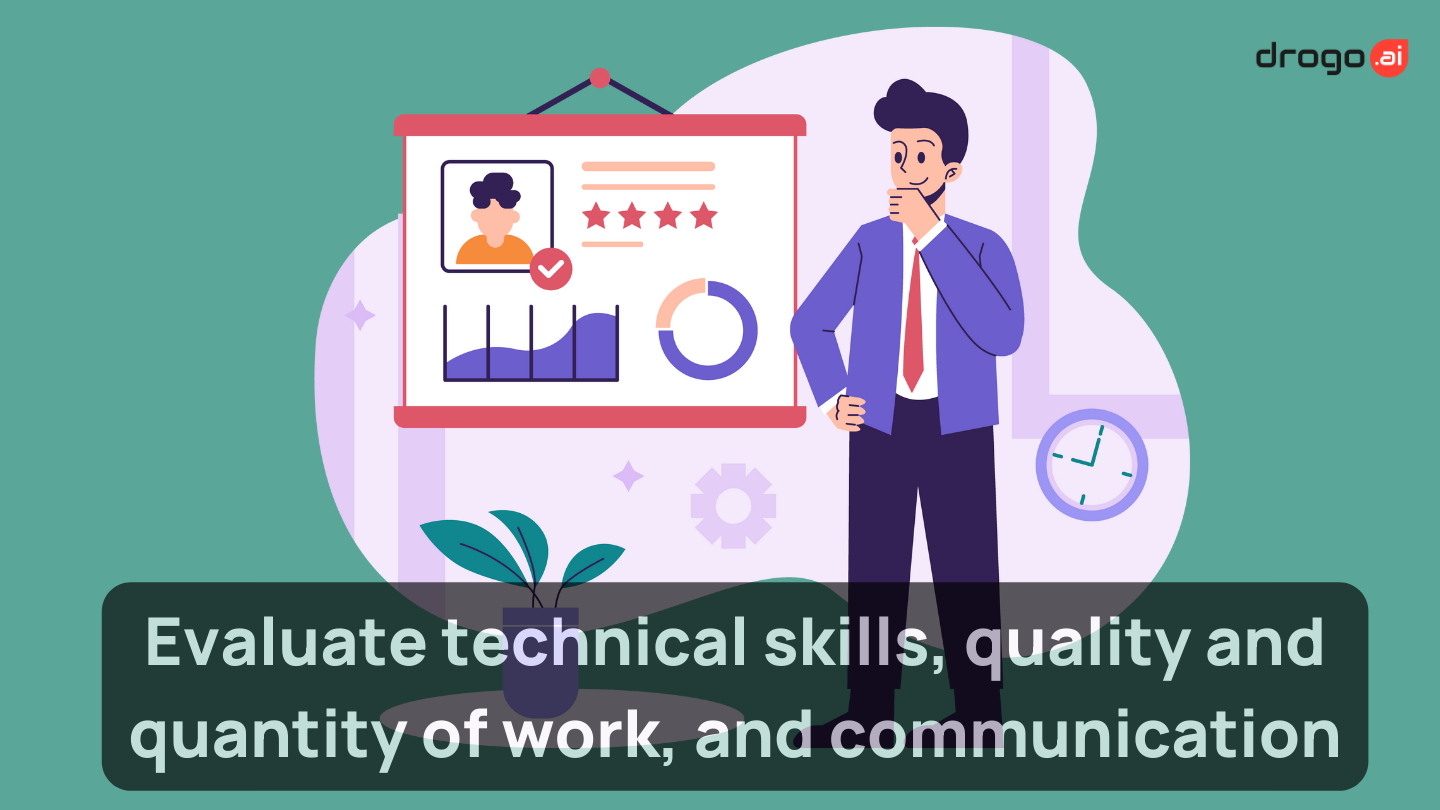
Ideally, you want to conduct an evaluation that ultimately brings out the best in everyone. There are 7 areas I will recommend you work towards throwing light on when conduct effective performance reviews:
1. Job Knowledge and Skills
Evaluate the employee’s understanding of their role and the necessary skills to perform their job effectively. For instance, a finance officer should be well-versed in financial regulations and accounting software.
2. Quality of Work
Assess the accuracy, thoroughness, and overall quality of the employee’s output. In a construction company, this might mean evaluating the precision of architectural designs.
3. Quantity of Work
Measure productivity levels and compare them with those of peers. For example, in a manufacturing firm, you might measure the number of units produced by each employee.
4. Communication Skills
Review the effectiveness of the employee’s communication, both within the team and with external stakeholders. A project manager’s ability to clearly convey project goals and updates is crucial.
5. Initiative and Problem-Solving
Observe the employee’s ability to proactively address issues and come up with solutions. For instance, a sales executive who identifies and resolves client issues quickly demonstrates strong initiative.
6. Attendance and Punctuality
Check the reliability and timeliness of the employee. Regular attendance and punctuality are essential for maintaining team productivity and morale.
7. Performance Against Goals

Evaluate how well the employee has met the goals set during the previous review period. For example, a marketing executive might be evaluated on the success of their campaigns against set targets.
What Process Should You Follow When Conducting Reviews?
I can't speak to the 'best' process. However, after researching reviews for more years than I'm proud of, I've pegged down some key steps to conducting effective performance reviews, and hopefully they work for you.
1. Set Performance Standards
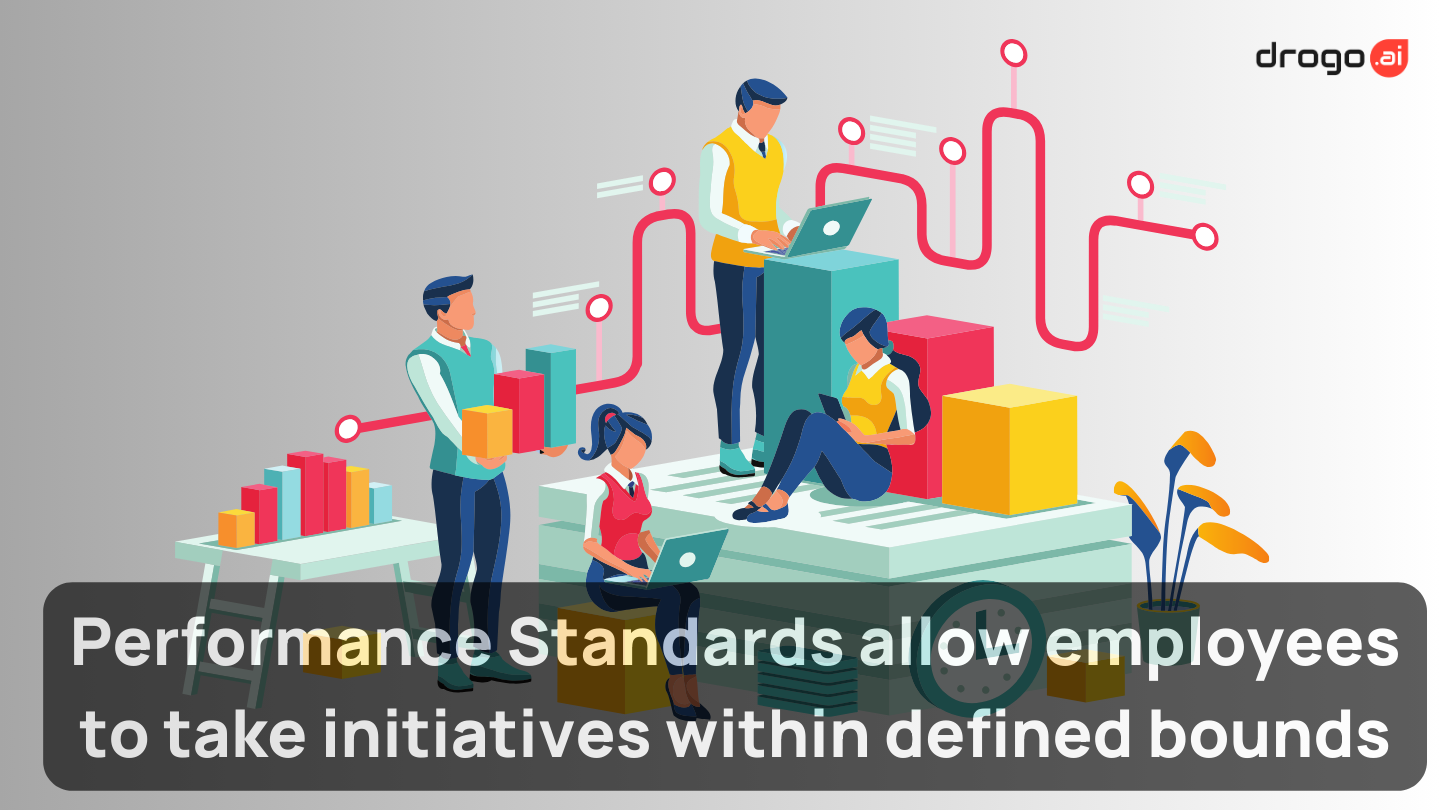
Define clear, achievable performance standards that are closely related to job descriptions. This helps in setting a benchmark for evaluating employee performance.
For instance, a teacher's performance standard might include student performance and classroom management. This way, the teacher gets a good sense of the scope of her responsibilities, even before she gets assigned clear goals.
2. Set Specific Goals
Tailor goals to individual strengths and weaknesses to enhance engagement and productivity. For example, if an employee excels in teamwork but struggles with time management, set specific goals to improve their time management skills.
3. Take Notes Throughout the Year
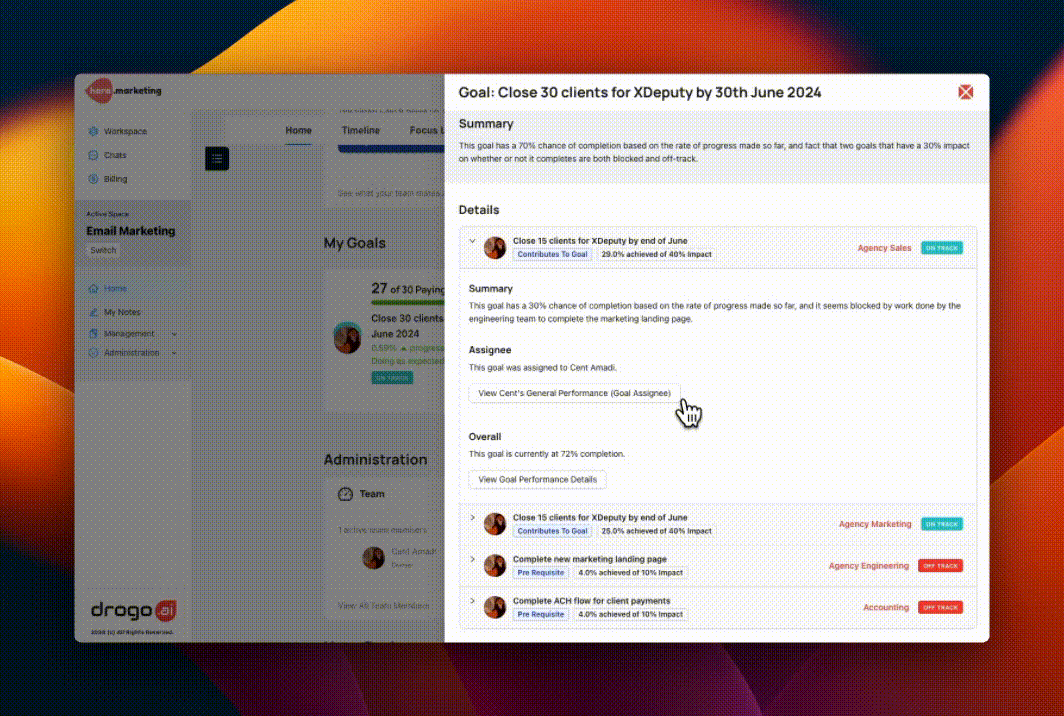 Software like Drogo helps you take note of employees' activities.
Software like Drogo helps you take note of employees' activities.
Track notable accomplishments and incidents to ensure comprehensive reviews. Keeping a performance journal can help in this regard.
See also: 7 benefits of using a project management tool for personal goal setting and tracking
2. Be Prepared
Review all relevant documentation and prepare discussion points before the evaluation meeting. This ensures a well-structured and productive discussion.
3. Be Honest and Specific with Criticism
Provide clear examples and constructive advice to help employees understand where they need to improve. Instead of saying "You need to improve your communication," provide a specific instance where communication fell short and offer practical suggestions.
4. Don’t Compare Employees
Focus on individual performance against the set metrics rather than comparing one employee to another. Comparing employees can create unnecessary competition and tension.
5. Evaluate the Performance, Not the Personality
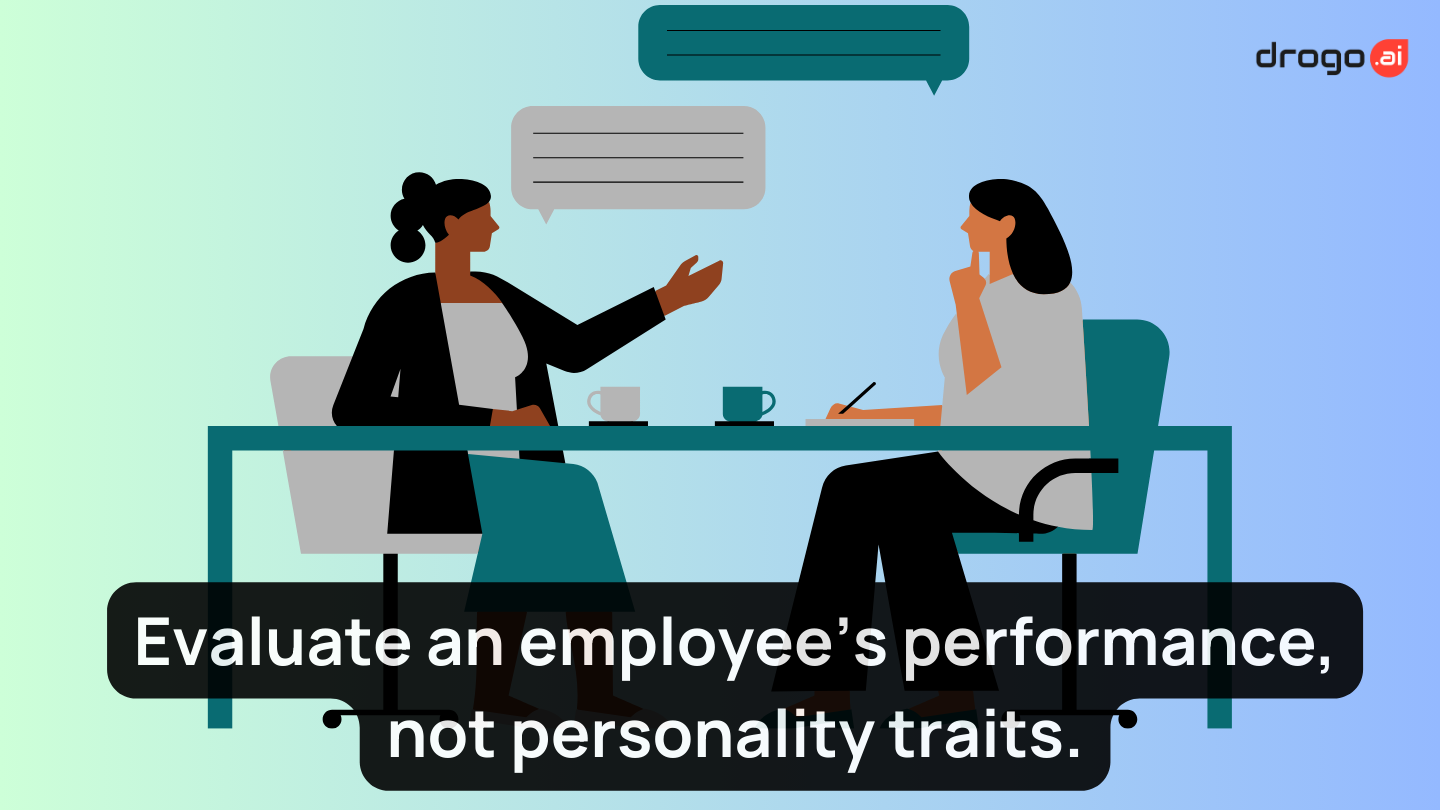
Concentrate on job performance rather than personal traits to ensure objectivity. For instance, assess an employee's work quality rather than their likability.
6. Have a Conversation
Engage in a two-way discussion to understand the employee’s perspectives and career aspirations. This can uncover valuable insights and foster mutual understanding.
7. Ask Specific Questions
Encourage employees to express their goals, challenges, and feedback. Questions like "What are your career goals for the next year?" can open up meaningful dialogue.
8. Give Ongoing Feedback
Regularly provide constructive feedback and monitor progress to ensure continuous improvement. This can prevent issues from escalating and keep employees on track.
Benefits of Tracking Employee Performance
Tracking employee performance offers numerous benefits:
1. Alignment
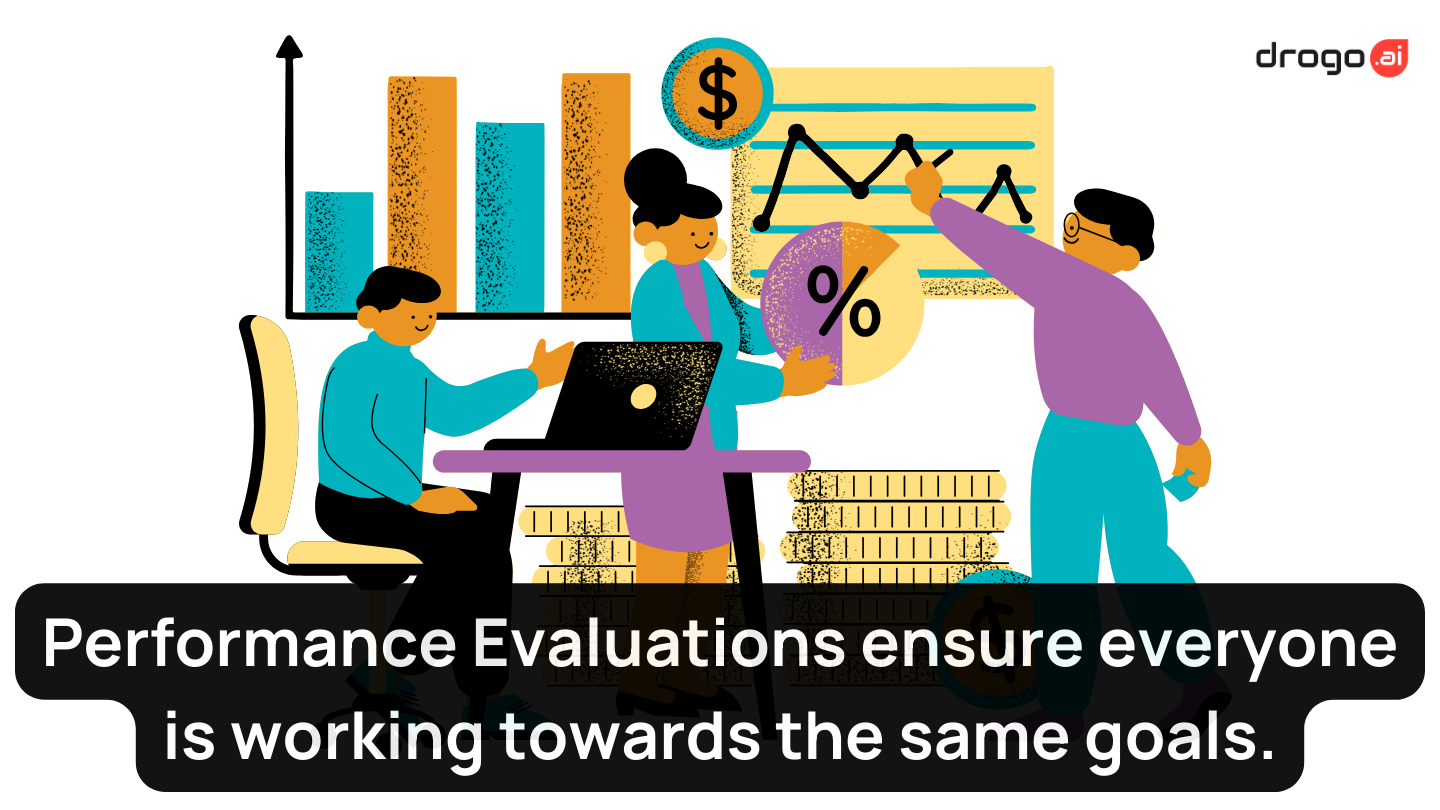
A good review keeps everyone on the same page and up-to-date with company objectives. This alignment ensures that all efforts are directed towards common goals.
2. Leadership Identification
Helps identify and reward potential leaders within the organization. For example, an employee who consistently demonstrates leadership qualities can be groomed for a managerial position.
3. Data for Targets
Provides reliable data for setting realistic and achievable targets. This data-driven approach ensures that targets are both challenging and attainable.
4. Productivity Barriers
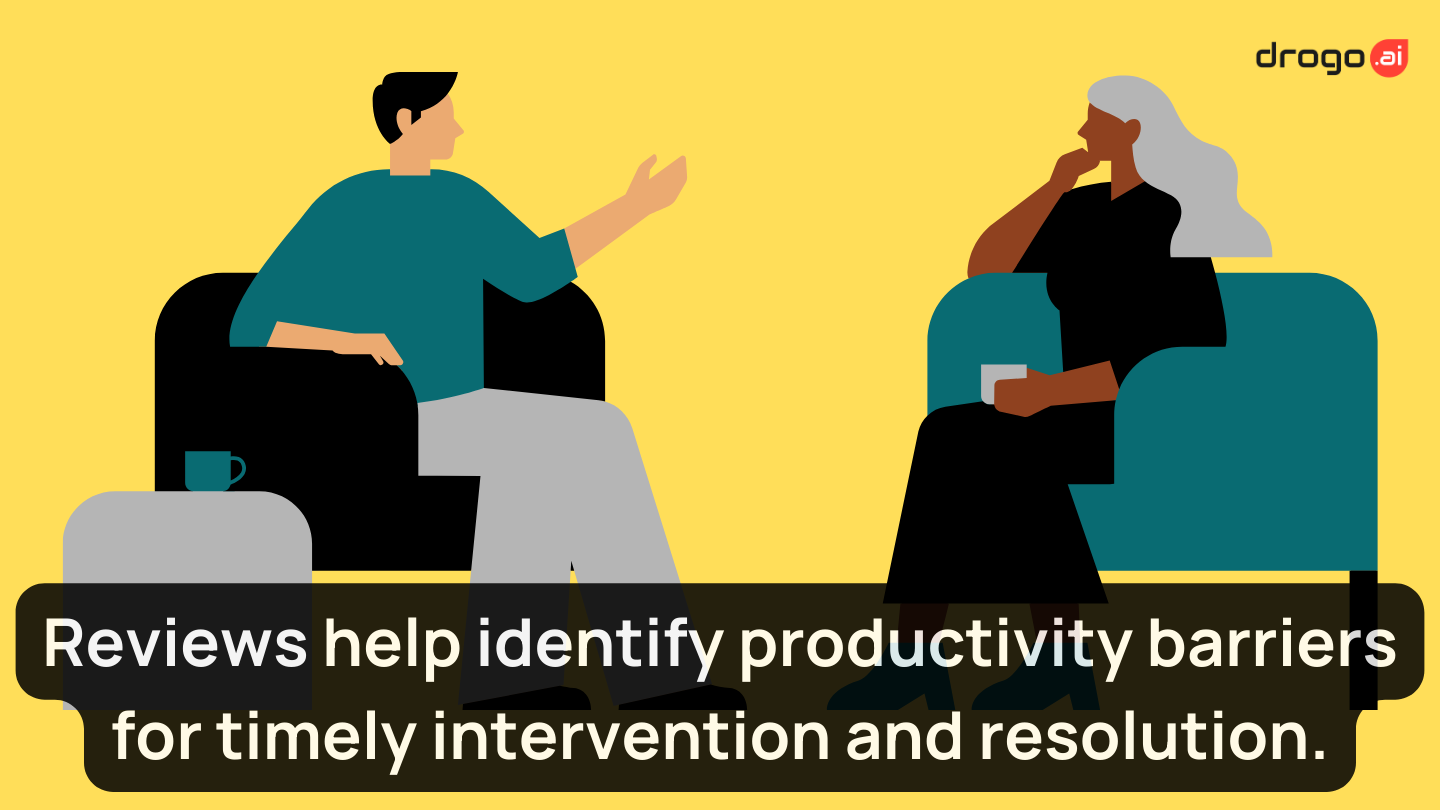
Highlights obstacles that may be hindering productivity. Identifying these barriers allows for timely intervention and resolution.
5. Training Opportunities
Offers insights into areas where further training might be needed. For instance, if multiple employees struggle with a particular task, targeted training can be provided.
6. Focus and Efficiency
Enhances focus and efficiency across the board. Clear performance metrics and regular feedback help employees stay focused and work more efficiently.
7. Improved Communication
Facilitates better one-on-one communication and feedback. Regular reviews encourage open dialogue and foster a positive work environment.
Why Put Effort Into Your Performance Evaluation?
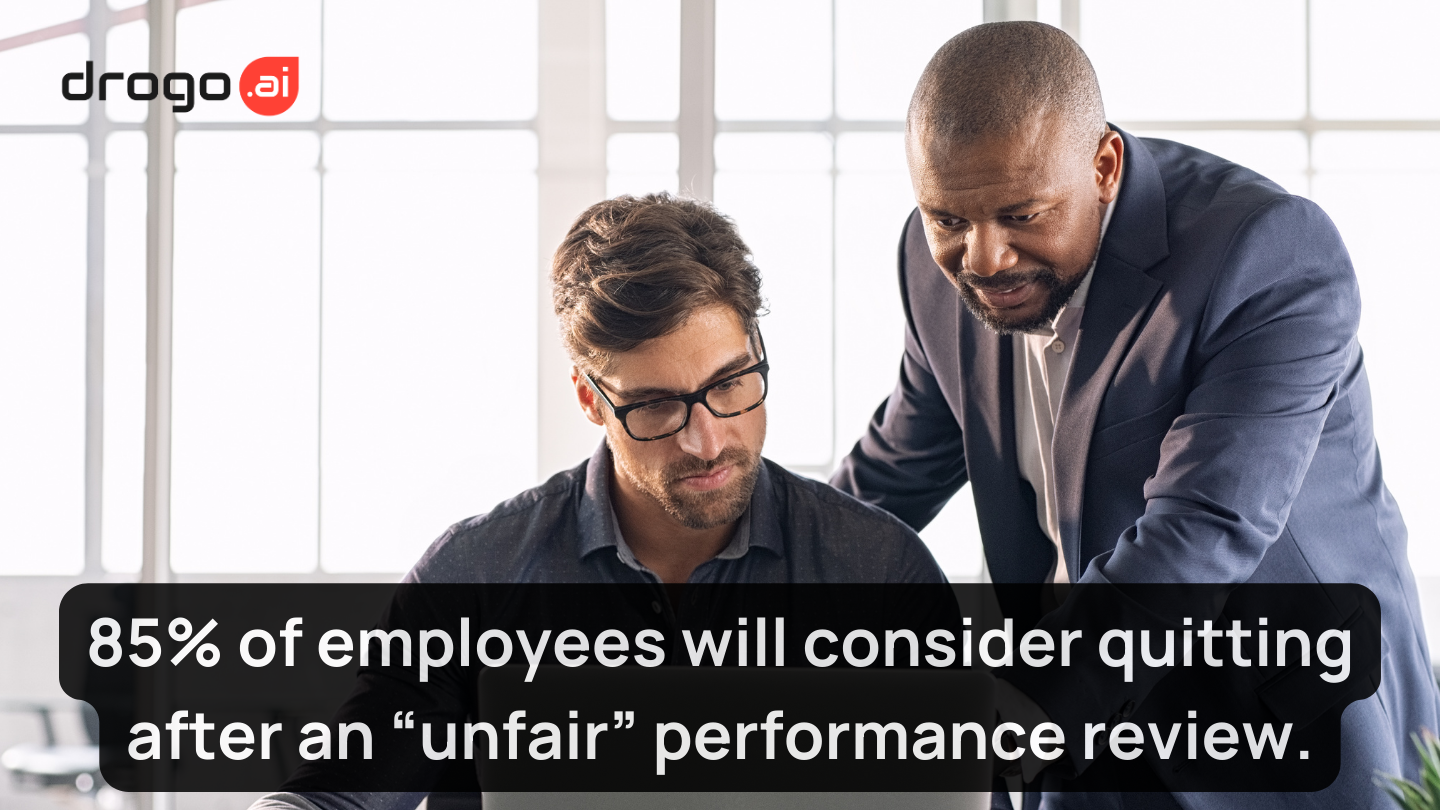
Typically, employee evaluations serve to provide insights into company culture and clarify expectations for employees. They offer guidance, support, and constructive criticism, fostering both personal and professional growth.
All the benefits we've covered in the "Why track performance" section applies.
In a recent 2023 survey, as many as 85% of employees indicated that they would consider quitting if they didn't feel like the performance review process was fair, and more than half were either "very likely" or "extremely likely" to do so.
So the fact that you do reviews is almost as important as you getting reviews right.
Tips for Effective Performance Reviews
1. Keep Position Information Updated
Tailor reviews to specific roles and ensure that employees understand their job requirements. This ensures that evaluations are relevant and meaningful.
2. Regularly Note Employee Performance
 Software like Drogo helps you take note of employees' activities.
Software like Drogo helps you take note of employees' activities.
Track productivity, teamwork, and skills throughout the year for a comprehensive review. This ongoing documentation provides a complete picture of an employee’s performance.
4. Solicit Information from Other Managers
Gather feedback from other supervisors about the employee’s performance and behavior. This provides a well-rounded view of the employee’s contributions and areas for improvement.
5. Be Direct
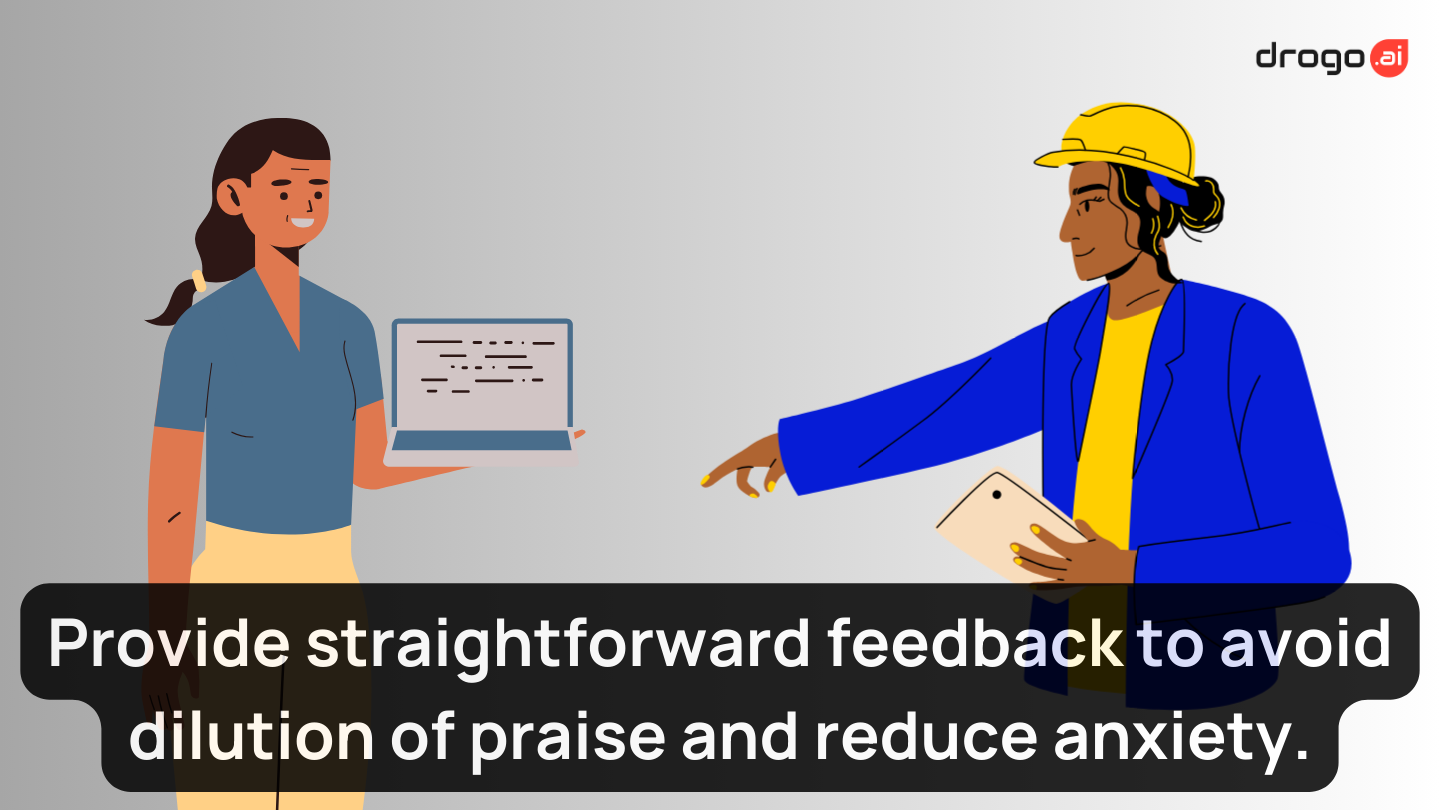
Clear and direct feedback helps employees understand exactly what is expected of them. Provide straightforward feedback to avoid dilution of praise and reduce anxiety.
6. Note Improvement Opportunities
Pair criticisms with suggestions for improvement and set clear, specific goals. This constructive approach helps employees know what steps to take to improve.
7. Use Clear, Actionable Language
Avoid vague terms and use specific action words and phrases to describe performance. This clarity helps employees understand and act on the feedback.
8. Encourage Dialogue
Allow employees to express their thoughts and goals, engaging in a two-way conversation. This fosters mutual understanding and collaboration.
9. Ask the Right Questions
Inquire about their goals, achievements, obstacles, and team dynamics. Questions like "What challenges have you faced this quarter?" can provide valuable insights.
10. Communicate Regularly
Maintain regular interactions between evaluations to build a better understanding of performance. This ongoing communication ensures that feedback is timely and relevant.
11. Define Next Steps
Conclude evaluations with an action plan outlining specific steps for improvement and how progress will be measured. This ensures that the review is not just a critique but a roadmap for future success.
Examples of Employee Performance Evaluation
1. Exceeds Expectations
Louisa, a web content team leader, increased website traffic by 30% due to her effective delegation and team communication. This example shows how clear leadership and effective teamwork can significantly impact results.
2. Meets Expectations
Gayle meets job requirements but needs to take more initiative and conduct independent research. This evaluation highlights areas for improvement while acknowledging the employee’s strengths.
3. Fails to Meet Expectations
Bill lacks necessary communication skills and avoids interacting with customers and teammates, needing significant improvement to avoid termination. This stark evaluation underscores the importance of key skills and provides a clear call to action.
Best Practices for Effective Performance Reviews
1. Provide Regular, Informal Feedback
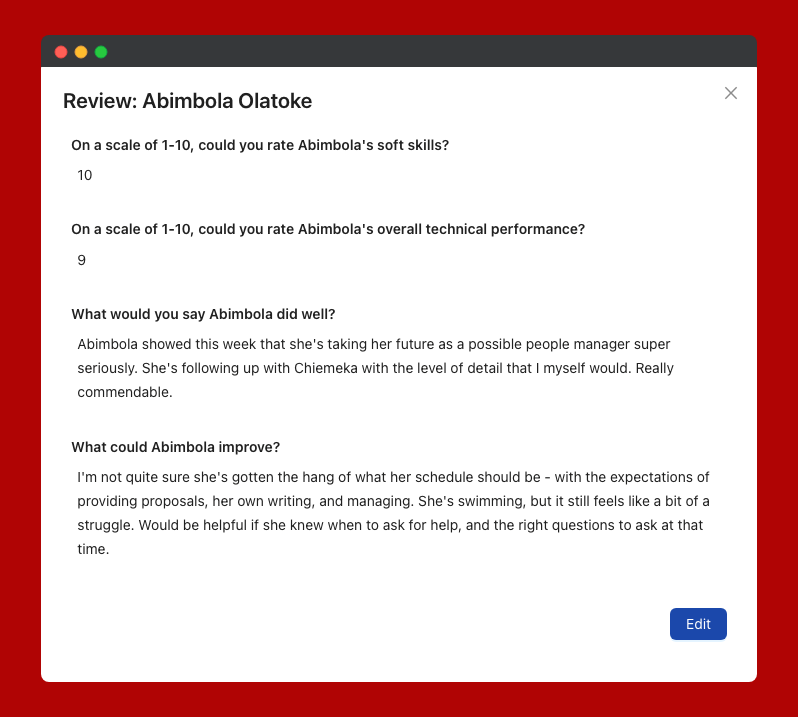 Drogo allows you share regular feedback, even before a formal review.
Drogo allows you share regular feedback, even before a formal review.
Consistent assessments prevent surprises during formal reviews. Keep detailed notes on employee performance throughout the year and acknowledge top performers regularly to maintain their motivation and engagement.
2. Be Honest with Employees
Address issues directly and tactfully. Avoid avoiding uncomfortable topics; clarity is essential. Set clear expectations for future performance.
3. Conduct Face-to-Face Reviews

Prefer in-person meetings for nuanced discussions. Use video chats for remote workers to ensure live interaction. Create a comfortable environment to facilitate open dialogue.
4. Use Tangible, Pertinent Examples
Reference specific instances to support feedback. Detailed examples help employees understand and accept critiques.
5. End on a Positive Note

Conclude formal reviews with clear, achievable goals. Reinforce positive feedback to motivate employees for future performance.
Wrapping up
When done right, performance reviews have glaring immediate benefits. They
- enhance operational efficiency
- clarify expectations
- improve communication
- recognize achievements.
Drogo is built to help you get the best from your team through non-intrusive system to ensure continuous feedback and provide the right structure for great formal reviews.
If you would like to learn more how these principles, or Drogo, could work for you, feel free to set up a meeting with me. I'll be happy to clarify.

